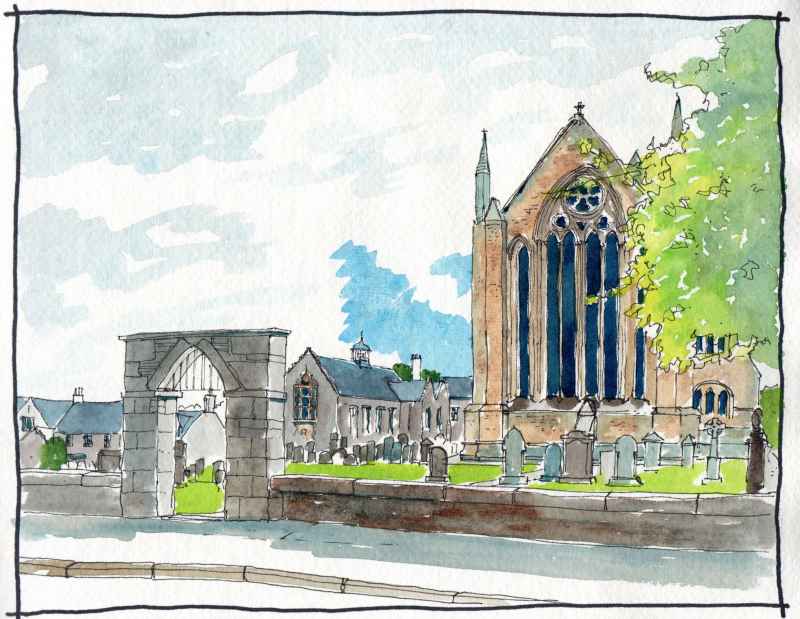Dunblane Cathedral, Stirlingshire, is one of the few medieval cathedrals of Scotland to have remained in use. Commenced in the 12th century, most of the current building dates from the 13th century. After the Reformation services were conducted in the chancel and the nave became unroofed and remained this way for 300 years. The roof was restored in the late nineteenth century (1889) by Sir Robert Rowand Anderson. John Ruskin wrote of it in 1853 “I know not anything so perfect in its simplicity and so beautiful, as far as it reaches, in all the Gothic with which I am acquainted”. It is indeed an elegant building particularly its east gable shown here. This dates from the fifteenth century with nineteenth century tracery and has a power in its simpicity that makes it very special. It is complemented by a low scale cathedral close around the graveyard and the cathedral hall. This was designed in the seventeenth century scottish style with crow stepped battlements and an ealborately decorated east window but was in fact constructed in 1903. It was designed by Anderson as well.
|
|
|


